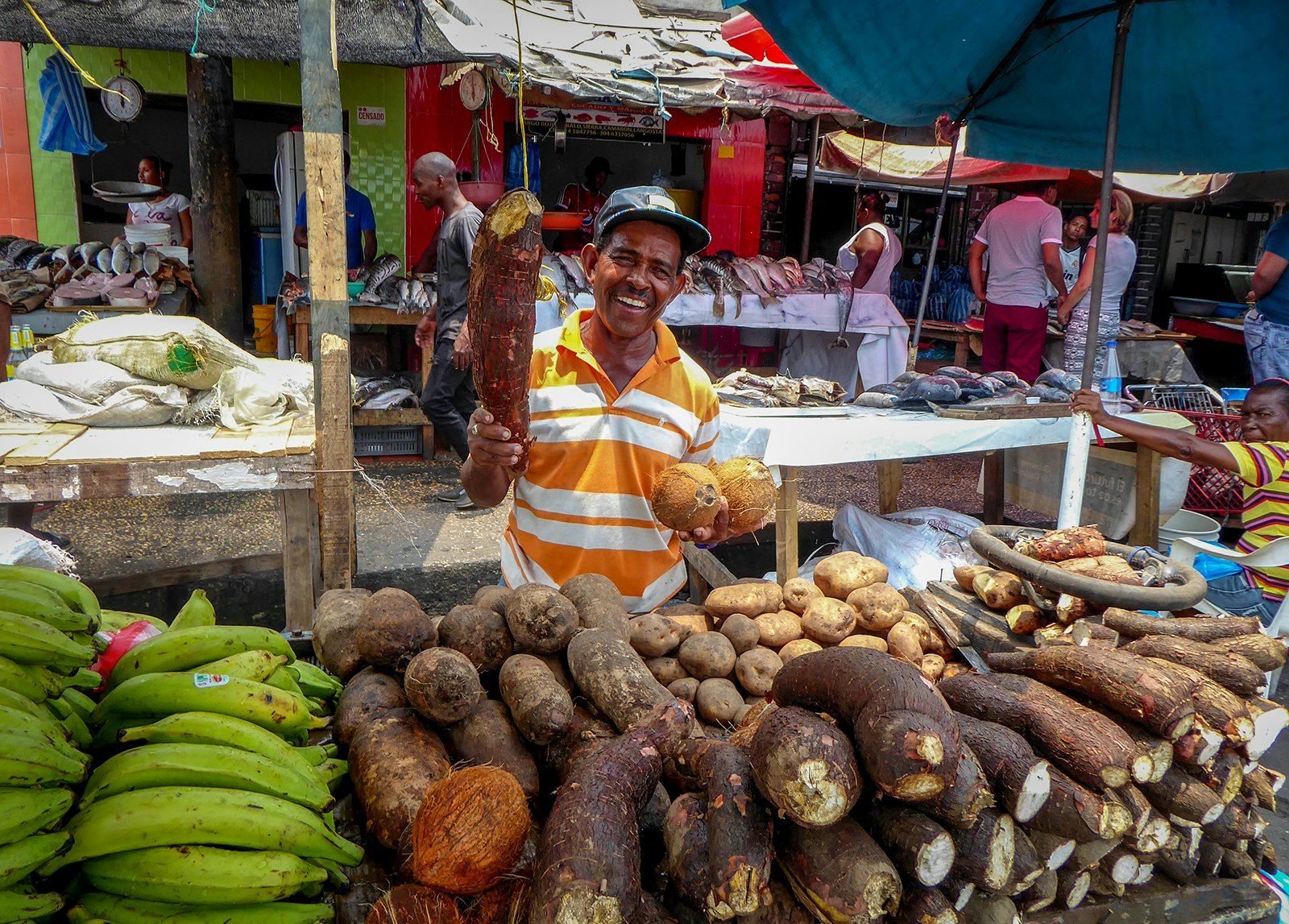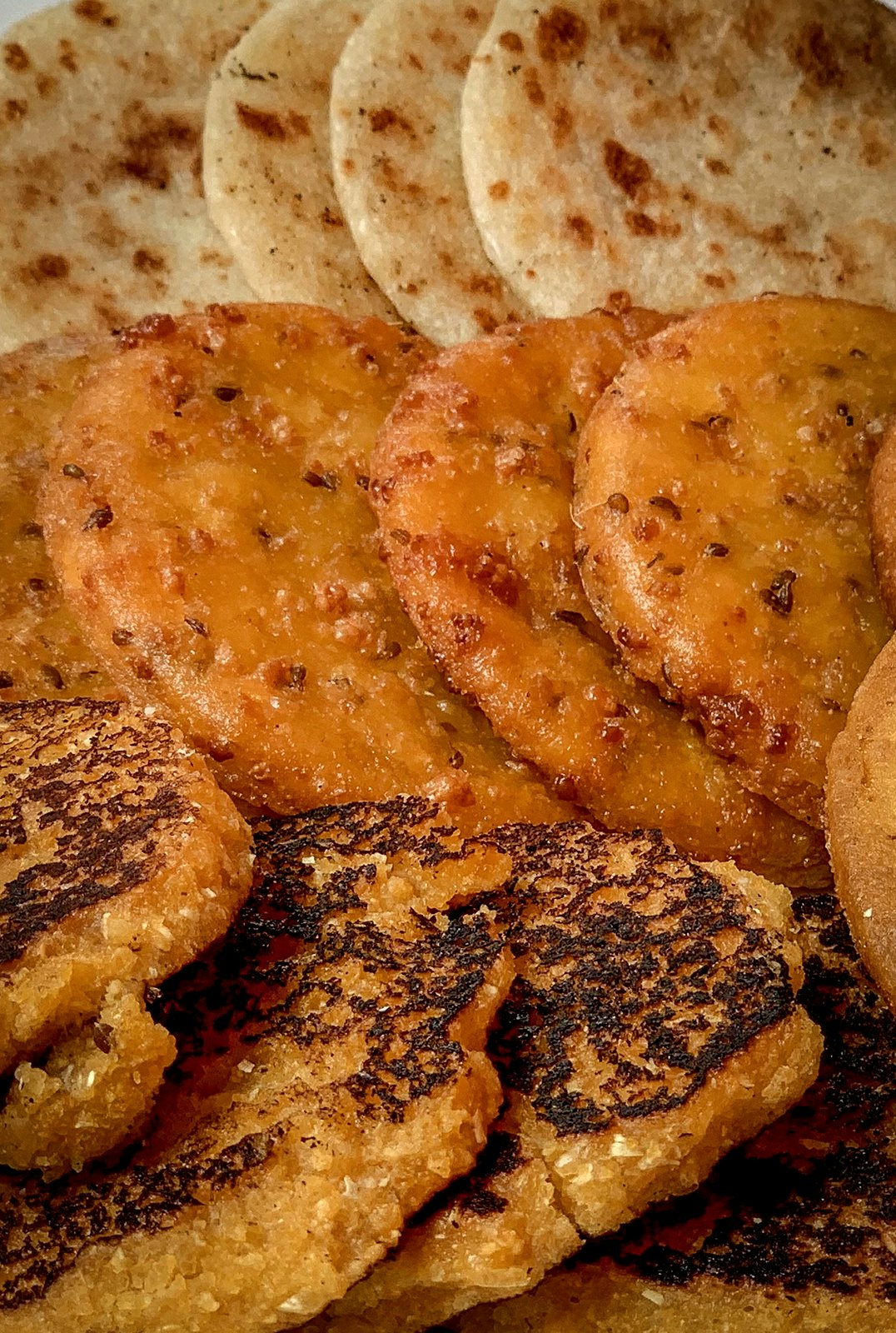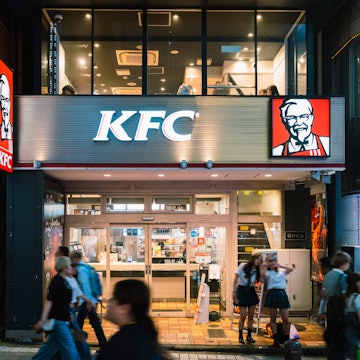

Colombia's food history has long been influenced by its culture and geography © Jeremy Woodhouse / Getty Images
From Caribbean flavors and fresh seafood in the north to the hearty dishes of Antioquia, exploring the world of Colombian food is its own form of travel guide.

Colombia has always been a sum of its geographical parts, with much of the nation’s history having been defined by its topographic divisions. Coastal cities like Cartagena have long and complex colonial pasts. Difficult-to-traverse territory allowed mountainous central towns like Medellín to develop their own distinct form of Colombian culture, while the Amazonia region is to this day still somewhat sheltered by its all-encompassing natural environment.
This inescapable relationship with the land leaves its mark on almost every aspect of Colombian life, and nowhere is this bond more evident than in the country’s cuisine. Supermarkets and restaurants are dominated by local produce and dishes.
Grilled plantains at every meal, avocado as garnish, and arepas as common a table staple as salt and pepper – the link between land and plate is strong. So walk into that little shop and ask about the produce, then sit down with the locals for lunch and enjoy. Exploration has never tasted this good.

The history behind Colombian cuisine
Getting to know the basics of Colombian cuisine is more than a formality; traditional fares are part of the fabric of daily life and dominate the range of eating options.
This predominance of classic gastronomy is partly a result of the country’s turbulent past. From five decades of armed conflict with FARC rebels to infamous drug cartel wars, internal strife kept Colombia relatively closed off from excessive foreign influence. But, mostly, it’s simply because this is the way things have always been.
Before Spain’s 300-year colonial dominance, pre-Columbian indigenous tribes migrated down from Panama and spent millennia slowly building agrarian-based societies. The Muisca, one of the most advanced indigenous groups in pre-colonial South America (numbering over half a million before the Spanish arrived) had a well-established food culture centered around crops like maize, potato, beans and quinoa. Chicha, a fermented corn-based alcoholic drink, was used by the Muisca over 5000 years ago and is still popular with locals today.

A regional food tour
Paying attention to the subtle differences within the country’s food culture can be a helpful metaphor for the greater Colombian ethos – a dual-identity that’s both strongly national and proudly regional.
The majority of Colombia’s traditional dishes have a similarly hearty aesthetic. Ajiaco is a rich chicken and corn stew from the high plain regions of Cundinamarca and Boyacá (near Bogotá) made with several varieties of potatoes and a local herb called “guasca.” Mondongo is another national dish, a beef tripe soup with vegetables and coriander, often served with sides of rice, avocado, banana and the always obligatory arepa. While in Bogotá, stop by Doña Elvira for authentic versions of these Colombian classics.
It’s jokingly been called “peasant food,” yet, despite serious battles with widespread inequality, Colombian cuisine is one area with little class stratification. Laborers and finca owners alike had to eat what was available, and these farm-to-table traditions still color Colombian eating, crossing social lines and remaining a unifying aspect of daily life.
While menu variety may seem at first glance limited, noticing the slight variations as you move through the country can help shine a light on surrounding characteristics.

Understanding the classic bandeja paisa
When you’re inevitably offered a bandeja paisa, Colombia’s unofficial national dish, take a moment with the aforementioned piece of history. “Bandeja” (platter) and “paisa” (nickname for residents of the central Antioquia region) is a belt-busting mix of rice, beans, fried egg, avocado, arepa, plantain and a generous selection of various meats. Its lineage traces back to local campesinos (farmers) who needed to fill up on available carbs and proteins before heading out to work the fields. If in Medellín, check out Asados La 80 for local-approved bandejas in a warm atmosphere.
No matter the department (Colombia’s nomenclature for state or province) a bandeja paisa can always be found, typically with grilled chicharrón pork and chorizo sausage. Yet in Jardín, a charming Andean pueblo outside of Medellín, you’ll find locals having grilled trucha (trout) with their bandejas instead of meat. Surrounded by rolling green mountains and rocky river waterfalls the Jardín area is abundant with river trout, the region’s natural resources not only dictating the menu but provoking exploration.
Following the river to find the La Argelia trucheria (a trout farm and restaurant) for a riverfront lunch, you might happen upon the Cristo Rey lookout for scenic views or stumble upon some rustic cabins for rent, nestled along the river bank.
(Tip: Vegetarians need not go hungry. Dishes like bandejas are easy to substitute – just ask for sin carne with extra beans and avocado. Most places will gladly help out.)

Finding your perfect menú del día
Another helpful discovery guide is the menú del día. This tradition of generous, multi-course lunchtime meals is an affordable way to eat like a local while getting a taste of regional variations.
In Cartagena, it’s grilled fish with ajillo garlic sauce (likely bought early that morning at the busting Mercado Bazurto) with arroz con coco (coconut rice). On the Pacific Ocean side, you’ll find shrimp salads and rice with clams. Down in the Amazon regions, it’s casabe (crispy flatbread made from cassava or yuca) with pirarucú, the world’s largest, and increasingly endangered, freshwater fish. For a higher-end and impressively creative example of Amazonian cuisine, try La Chagra in Medellín.

Arepas, arepas everywhere
Then there are arepas. Another of Colombia’s national foods, arepas are quite literally everywhere. Baked fresh by street vendors, lining the shelves of grocery stores, or served like bread with every meal – arepas are a ubiquitous Colombian carb. But prevalent doesn’t necessarily mean pedestrian, and these corn-based pita-like treats have some regional nuance.
Central paisa regions often use basic corn flour and pop them on the grill stuffed with melted cheese; or bake a slightly sweeter version made with choclo, a more colorful yellow corn that gives a deliciously understated pancake-effect (keep an eye out for these arepas de choclo delivered fresh at local tiendas (stores), a versatile snack for travelers on the move).
Up on the Caribbean coast, arepas are baked with anise seeds for a bit of aromatic flavor; or are made con huevo, with egg, for a richer texture. When asked about these subtle differences, a costeño chef will likely smile and say they like things with a bit more sazón around here (slang for “special flavor” or “a little something extra”).
To read more about South American cuisine, check out our article here.















